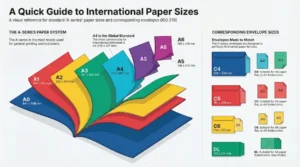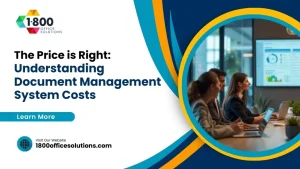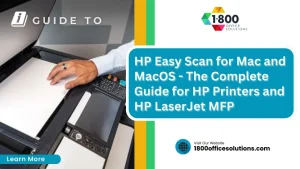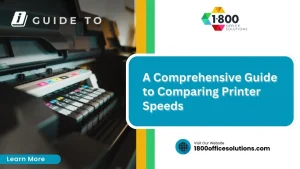Managed Print Services: Calculate Cost Benefits & Maximize Savings
Are you aware that many businesses overspend on printing without realizing it? In fact, companies can save up to 30% on printing costs by utilizing a managed print services cost savings. This guide will walk you through understanding these services, identifying hidden expenses in your current setup, and calculating your printing expenditures. By engaging with this content, business owners will learn how to optimize their printing processes, improve performance indicators, and reduce overall ownership costs, while also addressing issues like inefficient consumption and recycling practices.
Understanding Managed Print Services and Their Cost Benefits

Managed Print Services (MPS) offer businesses a strategic approach to optimize print management, leveraging cloud computing for enhanced workflow efficiency. This section will explore the financial advantages of managed print solutions, highlight how these services can significantly reduce operational expenses, and address common cost challenges faced by businesses. Additionally, insights on choosing reputable vendors, like Konica Minolta, will be provided for informed decision-making.
Defining Managed Print Services for Your Business
Managed Print Services (MPS) empower businesses to streamline their printing processes, integrating digital transformation into their operations. By managing consumables and maintaining inventory effectively, these services not only enhance workflow but also significantly reduce energy consumption. Moreover, MPS provides detailed invoice reporting, enabling businesses to track expenses and identify potential savings, thereby supporting more informed financial decisions.
Exploring the Financial Advantages of Managed Print Solutions
Managed Print Solutions provide businesses with the opportunity for standardization, which can lead to significant savings by reducing toner and paper waste. By implementing MPS, organizations can transition towards a paperless office, enhancing their knowledge of printing patterns and inefficiencies. This insight allows companies to make better decisions about resource allocation and optimize their print costs effectively.
How Managed Print Services Reduce Operational Expenses
Managed Print Services (MPS) significantly reduce operational expenses by lowering the total cost of ownership associated with printing equipment. By optimizing print workflows and minimizing downtime, MPS enhance efficiency and ensure that customers experience seamless operations without interruption. Additionally, these services encourage responsible printing practices, which can help reduce waste sent to landfill, ultimately supporting both cost savings and environmental goals.
Overcoming Common Cost Challenges With Managed Printing
Overcoming common cost challenges with managed print services requires a strategic approach that includes establishing a clear policy for printing within the organization. By outsourcing print management, businesses can gain better control over their ink cartridge usage, minimizing waste and optimizing resource allocation. A well-structured RFP (Request for Proposal) can helporganizations identify the right managed print services provider, ensuring they find solutions tailored to their specific needs, ultimately boosting cost efficiency and effectiveness.
Identifying Hidden Expenses in Your Current Printing Setup

Identifying hidden expenses in the current printing setup is essential for maximizing cost savings. Businesses should analyze both direct and indirect printing costs to uncover inefficiencies. Examining the impact of suboptimal devices on the budget, the true costs of supplies and maintenance, and employee printing behaviors can reveal significant opportunities for better fleet management. These insights pave the way for informed decisions regarding contracts and pricing to enhance sustainability and reduce overall expenses.
Analyzing Direct and Indirect Printing Costs
Analyzing direct and indirect printing costs is crucial for uncovering potential cost savings in any organization. Direct expenses include supplies like toner and paper, while indirect costs often stem from maintenance, energy consumption, and employee productivity. By evaluating these expenses, businesses can pinpoint inefficiencies; for instance, a significant percentage of costs can arise from using outdated laser printers that are not energy efficient, leading to higher utility bills and maintenance fees, impacting overall accounting practices.
The Impact of Inefficient Devices on Your Budget
Inefficient devices can have a substantial negative impact on an organization’s printing budget. Outdated printers often consume more cartridges than necessary, leading to higher costs per volume of print services. By implementing a strategic upgrade to modern, efficient devices, organizations can significantly reduce waste and optimize both their printing processes and overall expenses.
Uncovering the Cost of Supplies and Maintenance
Uncovering the cost of supplies and maintenance is crucial for businesses seeking to maximize their managed print savings. This involves a thorough assessment of the existing infrastructure, including devices like Lexmark photocopiers, to identify any hidden fees associated with supplies and servicing. Additionally, integrating a robust document management system can streamline processes, reduce unnecessary expenditures, and enhance overall efficiency, ultimately contributing to significant cost savings.
Assessing Employee Printing Behaviors That Increase Costs
Assessing employee printing behaviors is crucial for identifying hidden costs within an organization’s printing setup. An evaluation of these behaviors can reveal patterns leading to excessive use of color printing and unnecessary fax operations, which can inflate expenses. By fostering awareness of efficient printing practices among staff, businesses can achieve economies of scale in their print management, ultimately enhancing revenue through reduced operational costs.
Calculating Your Current Printing Expenditures

Calculating current printing expenditures involves several key elements that impact overall managed print costs. First, businesses need to gather data on printer usage and volumes to understand their printing habits. Next, estimating hardware and consumables costs, along with accounting for maintenance and support expenses, provides clarity on financial commitments. Finally, compiling a comprehensive cost analysis ensures that organizations can make informed decisions, optimizing productivity while considering factors like lease agreements and depreciation related to their unified communications systems.
Gathering Data on Printer Usage and Volumes
Gathering data on printer usage and volumes is a crucial step in understanding total cost of ownership (TCO) and identifying potential savings in a managed print environment. Organizations need to track metrics such as ink and toner cartridge consumption to uncover patterns that may indicate inefficiencies or overuse, which ultimately poses a risk to budget management. By analyzing printing habits, businesses can work with their managed print provider to develop targeted strategies aimed at optimizing resources and reducing unnecessary costs.
Estimating Costs of Hardware and Consumables
Estimating costs of hardware and consumables is a crucial step for businesses managing their print expenditures. By assessing the expenses related to printer procurement, including both the initial purchase price and ongoing support, organizations can better understand their total cost of ownership. Engaging with Managed Print Services providers can streamline this process, providing insights into document usage patterns that help businesses reduce unnecessary spending. For tailored solutions and further support, businesses are encouraged to Contact Us.
Accounting for Maintenance and Support Expenses
Accounting for maintenance and support expenses is essential for businesses aiming to maximize their managed print savings. These costs encompass not only the servicing of printers but also the necessary software updates and technical support associated with the devices. By thoroughly evaluating these expenses, organizations can identify areas for improvement, such as switching to a provider that offers more comprehensive support or negotiating better service agreements, ultimately leading to reduced overall printing costs.
Compiling a Comprehensive Cost Analysis
Compiling a comprehensive cost analysis is crucial for businesses seeking to maximize their managed print savings. This process involves aggregating all printing-related expenses, such as hardware acquisition, consumables, maintenance, and labor costs, to gain a holistic view of the total cost of ownership. By analyzing these factors, organizations can identify areas for improvement, target overspending, and implement strategies that enhance overall efficiency, ultimately driving down costs and supporting smart budget management.

Strategies to Maximize Savings With Managed Print Services
To maximize managed print savings, businesses should focus on several key strategies. Optimizing the fleet of printing devices ensures efficient use and reduces costs. Implementing monitoring tools aids in identifying usage patterns, while effective print policies can minimize waste. Additionally, negotiating service agreements can lead to lower expenses, and educating staff on cost-saving printing practices promotes more responsible usage.
Optimizing Your Fleet of Printing Devices
Optimizing the fleet of printing devices is critical for businesses looking to enhance cost efficiency and operational effectiveness. By assessing each device’s performance and usage, organizations can identify underutilized or outdated printers that contribute to unnecessary expenses. Implementing a mix of high-capacity printers alongside smaller desktop models ensures that printing tasks are allocated to the most efficient devices, thereby reducing costs related to supplies, energy consumption, and maintenance.
Implementing Monitoring Tools for Better Cost Control
Implementing monitoring tools within a Managed Print Services framework allows businesses to gain real-time insights into their printing habits and expenses. By tracking metrics such as print volumes, device usage, and inventory levels, organizations can identify inefficiencies and adjust policies to reduce waste. For example, many companies report significant savings after deploying these tools, as they enable proactive management of resources and informed decisions that align with operational goals.
Reducing Waste Through Effective Print Policies
Reducing waste through effective print policies is essential for businesses looking to maximize their managed print savings. Implementing clear guidelines on printing usage can drastically minimize unnecessary printing, such as excessive color copies or large document printouts. Training employees on these policies encourages responsible printing practices, ultimately leading to lower operational costs and a more sustainable workplace.
Negotiating Service Agreements to Lower Expenses
Negotiating service agreements is a crucial step for businesses seeking to lower expenses associated with Managed Print Services (MPS). By comparing multiple vendors and their offerings, organizations can leverage competitive quotes to secure more favorable terms and pricing. For instance, understanding industry standards for service levels and parts replacement can empower businesses to negotiate better maintenance agreements, ultimately leading to reduced costs while ensuring optimal device performance.
Educating Staff on Cost-Saving Printing Practices
Educating staff on cost-saving printing practices is crucial for maximizing savings through Managed Print Services. By providing training on efficient printing techniques, such as utilizing double-sided printing and avoiding unnecessary color copies, organizations can significantly reduce waste and costs. Additionally, fostering a culture of awareness around printing habits empowers employees to make informed decisions, ultimately contributing to both financial savings and a more sustainable office environment.
Implementing Cost-Effective Printing Policies

Implementing cost-effective printing policies is essential for optimizing managed print savings. Key strategies include setting printer defaults to duplex and monochrome printing, encouraging the use of digital alternatives, and limiting access to color printing options. Regular policy reviews help businesses adapt and improve, ensuring continuous cost efficiency while effectively managing resources.
Setting Defaults to Duplex and Monochrome Printing
Setting printer defaults to duplex and monochrome printing is an effective strategy for businesses aiming to maximize managed print savings. By implementing these defaults, organizations can significantly reduce paper usage and printing costs associated with color ink. For instance, firms that prioritize duplex printing often see a decrease in overall paper consumption, contributing to both cost savings and environmental sustainability efforts.
Encouraging Digital Alternatives to Printing
Encouraging digital alternatives to printing is a practical strategy for businesses aiming to maximize managed print savings. By promoting the use of electronic documents, cloud storage, and digital communication tools, organizations can significantly reduce their reliance on paper, lowering associated printing costs. Implementing policies that favor digital workflows not only leads to cost savings but also enhances efficiency and aligns with sustainability goals, ensuring a streamlined approach to document management.
Limiting Access to Color Printing Options
Limiting access to color printing options is a crucial strategy for businesses aiming to maximize their managed print savings. By implementing policies that restrict color printing to essential documents only, organizations can significantly reduce printing costs associated with expensive color inks. For example, setting default settings to monochrome for everyday printing tasks encourages cost-effective practices while still allowing color printing when truly necessary, thus ensuring budget management aligns with overall operational goals.
Regular Policy Reviews for Continuous Improvement
Regular policy reviews are essential for businesses looking to enhance their managed print services and achieve ongoing cost savings. By systematically assessing current printing policies, organizations can identify areas that require adjustments to foster efficiency and minimize waste. For example, adjusting defaults for duplex printing or restricting color access can significantly cut expenses, leading to a more cost-effective printing environment while aligning with sustainability goals.
Measuring and Monitoring Your Savings Over Time

Establishing key metrics for success is essential for measuring and monitoring managed print savings effectively. Organizations can utilize analytics to track progress and identify trends in printing costs. Adjusting strategies based on performance data helps optimize spending further, while celebrating milestones in cost reduction fosters a culture of continual improvement. This section will provide actionable insights into each of these components.
Establishing Key Metrics for Success
Establishing key metrics for success is essential for effectively measuring managed print savings. Organizations should focus on tracking metrics such as total cost per page, print volume trends, and supply utilization rates to gain insights into their printing habits. By regularly reviewing these metrics, businesses can identify areas for improvement, making data-driven adjustments that enhance their overall cost efficiency and resource management in their printing environment.
Utilizing Analytics to Track Progress
Utilizing analytics to track progress in managed print savings allows businesses to gain insights into their printing behaviors and associated costs. By analyzing data on print volumes, supply usage, and service frequency, organizations can identify patterns that lead to unnecessary expenses and inefficiencies. This proactive approach enables businesses to make informed adjustments to their print management strategies, ultimately driving down costs while enhancing overall operational effectiveness.
Adjusting Strategies Based on Performance Data
Adjusting strategies based on performance data is crucial for businesses aiming to maximize their managed print savings. By regularly analyzing key metrics such as print volume, supply usage, and cost-per-page, organizations can identify trends and areas for improvement. For example, if data reveals excessive color printing, businesses can implement new policies to curb unnecessary color use, ultimately leading to significant cost reductions and enhanced efficiency in their print management processes.
Celebrating Milestones in Cost Reduction
Celebrating milestones in cost reduction is essential for maintaining motivation and demonstrating the tangible benefits of Managed Print Services. Organizations can acknowledge achievements such as meeting savings targets, reducing waste, or improving efficiency in their printing processes. By sharing these successes with the team, businesses foster a culture of awareness and engagement, encouraging employees to continue practicing cost-effective printing habits that contribute to ongoing operational savings.
How Managed Print Services Deliver Cost Savings for BusinessesConclusion
Maximizing managed print savings is essential for businesses aiming to enhance efficiency and reduce operational costs. By thoroughly analyzing printing expenses, implementing strategic policies, and educating staff, organizations can uncover significant savings and optimize their print management processes. Regular monitoring and adjustment of print strategies ensure that businesses remain proactive in addressing cost inefficiencies. Ultimately, adopting effective managed print services not only improves budget management but also contributes to a more sustainable and productive workplace environment.











